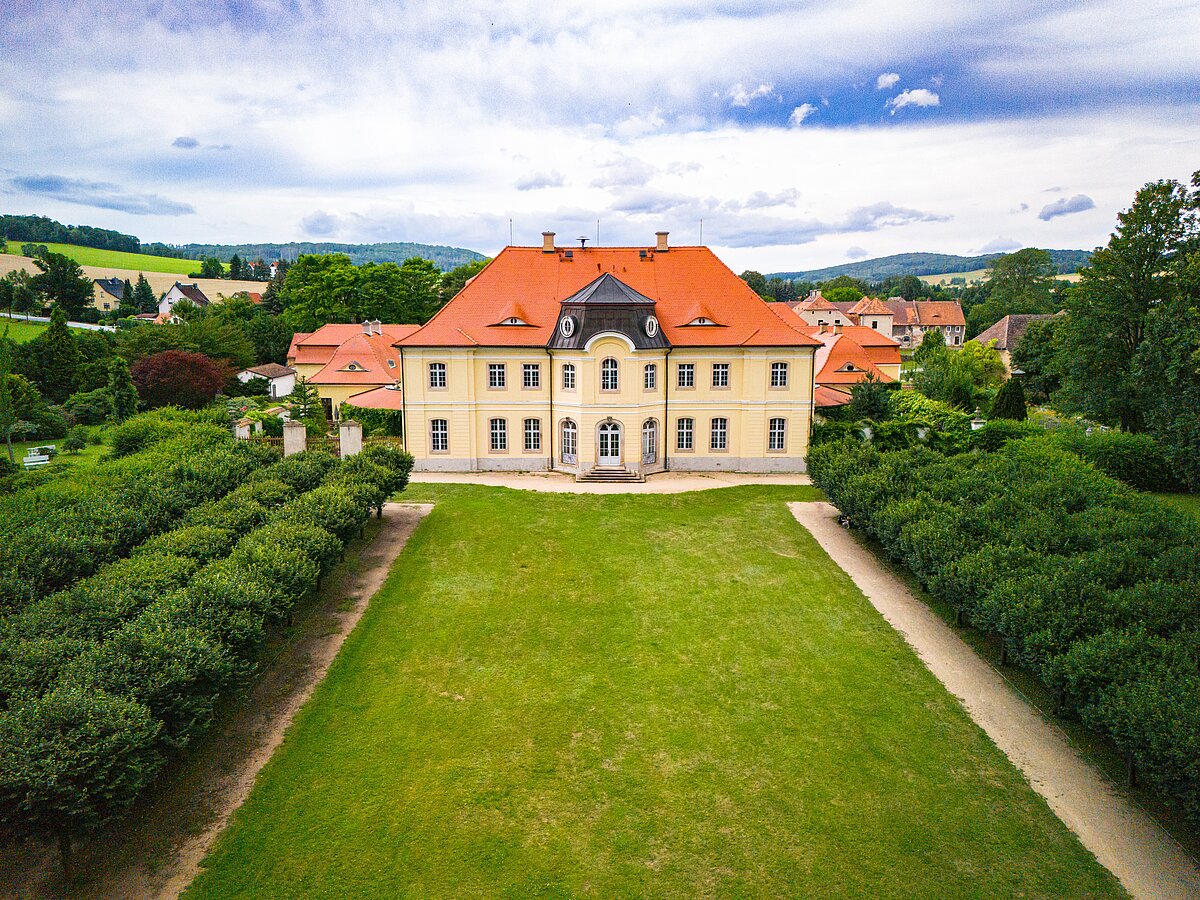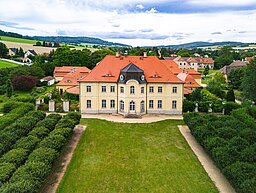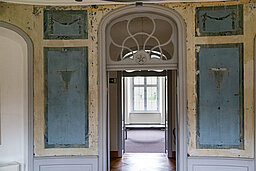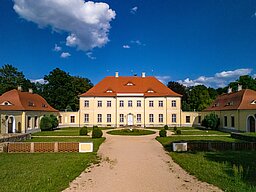


Architecture and art form a unique combination in the grounds of Königshain Castle. The fully restored castle itself combines architecture from different eras and at the same time offers young artists the opportunity to work for four weeks in this magnificent historical setting. The so-called “Steinstock” of the older castle complex is one of the oldest secular buildings in Upper Lusatia.
Dorfstraße 29, 02829 Königshain
Telephone: +49 35826 64686
Guided tours by appointment
By car: Take the B6 to Königshain and follow the signs to the castle.
Public transport: Take the train to Görlitz and then a bus or cab to Königshain.
Dresden Baroque on the outside, contemporary painting and sculpture on the inside: Königshain Castle thrives on contrasts. For 2010, the manor house in the district of Görlitz, which was built between 1764 and 1766, has been home to a modern art gallery where international artists present their works. In addition, the rooms where the nobility once held court are transformed into an art studio twice a year. Two scholarship holders from the Foundation for Art and Culture in Upper Lusatia and the VIA REGIA Begegnungsraum Landesverband Sachsen e.V. move in here and draw inspiration for their work from the historical backdrop of the complex. In addition to the two-storey manor house, this also includes the older Renaissance castle and the so-called “Steinstock”, one of the oldest secular buildings in Upper Lusatia, as well as a beautiful rhododendron garden. Thanks to countless varieties, it blooms here in all colors in spring.
It is this contrasting yet harmonious combination of form and color, different architectural styles, modern art and magnificent natural scenery that makes Königshain Castle unique in the region. However, its history also reads a little differently to that of the numerous other castles and palaces in the region. The builder of the baroque castle, the naturalist, painter and numismatist Carl Adolph Gottlob von Schachmann, was considered a pioneer and progressive social reformer at the time. Ten years before the French Revolution, he freed the peasants from their previous indentured servitude and made them tenants. This made him very popular with the population. Schachmann also had the baroque garden, consisting of an English and a French section, laid out, which was reconstructed after the political change according to the historical model.
After Schachmann's death in 1789, Königshain Castle came into the possession of his nephew Carl Heinrich Ludwig von Heynitz, a member of an old Meissen noble family who also owned several estates in Saxony at the time. The family resided at Königshain Castle until it was expropriated by the Red Army at the end of the Second World War. During the GDR era, the castle was then used as a kindergarten. Until the municipality completely renovated it in the early 2000s and modern art breathed new life into the historic building with the help of the Königshainer Heimatverein e.V..



